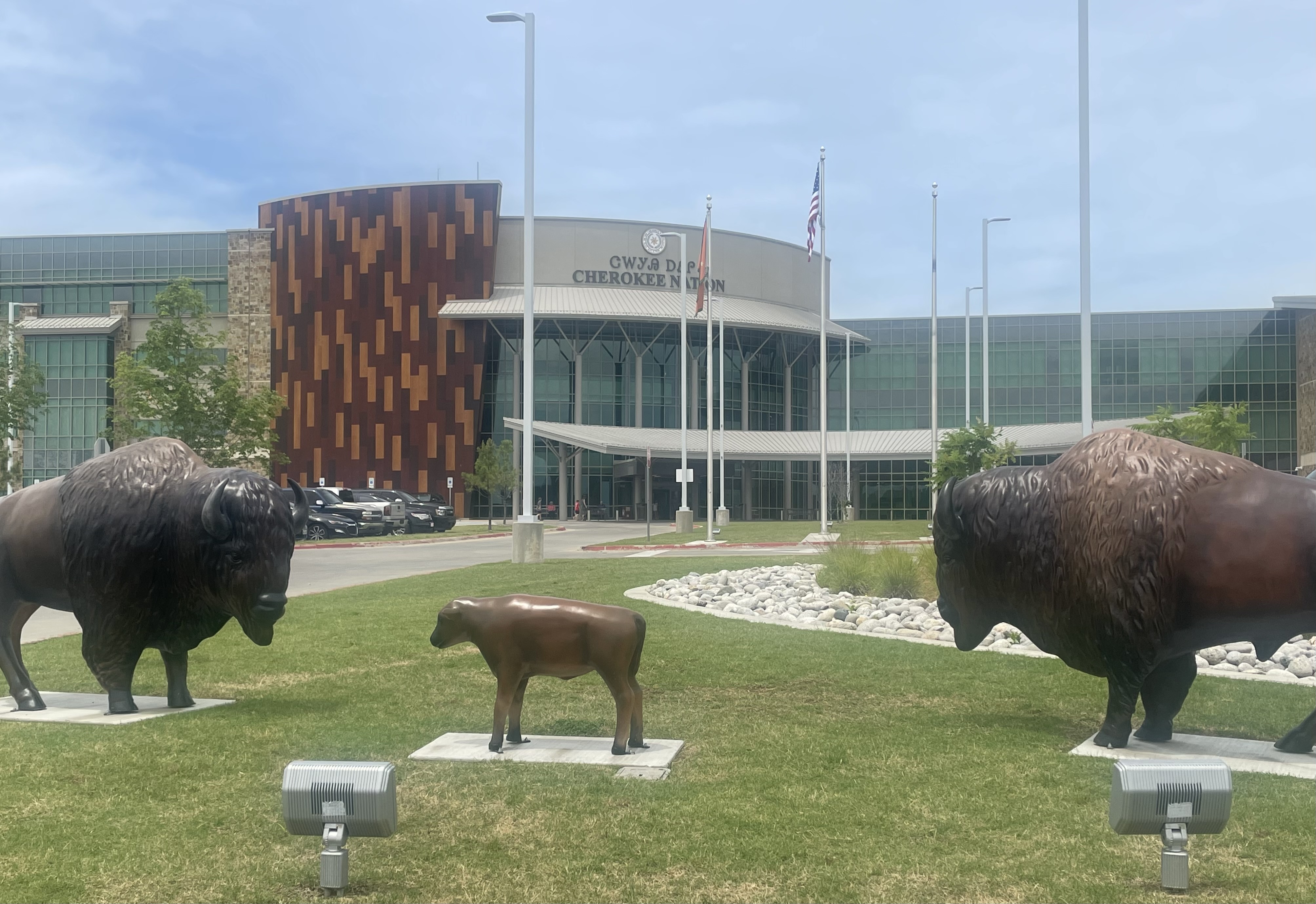
- Details
- By Chuck Hoskin Jr
Guest Opinion. One of the greatest accomplishments of Cherokee Nation has been building the largest health care system in Indian Country. Our world-class facilities receive more than 1.5 million patient visits each year, and we have strategically built health facilities around our 7,000-square-mile reservation so that no Cherokee on the reservation is more than 30 minutes away from care.
Still, the greatest facilities can do us no good if they are not filled with caring, highly skilled, culturally competent doctors, nurses, physician assistants and other health care staff. To help meet our workforce needs, we partner with the Health Resources and Services Administration, a federal agency that focuses on training health professionals and improving access to health services, especially in rural communities and other high-need areas.
In 2021, HRSA established the Tribal Advisory Council to be a forum for tribally elected leaders and HRSA staff to collaborate on improving health in Indian Country. I represent the Oklahoma area on the HRSA TAC and was elected as its first chair. Recently, we hosted a meeting of the TAC in our capital of Tahlequah.

Over two days, other tribal leaders on the TAC and I discussed Native health issues with HRSA leadership, including the health workforce, maternal and child health, rural health policy, and more. We heard about programs by our neighbor tribes, including the Chickasaw Nation pediatric mental health care program and the Choctaw Nation rural opioid response program.
We also brought in leaders from the OSU College of Osteopathic Medicine at Cherokee Nation to discuss what we are doing with a HRSA grant to fund medical residencies in tribal facilities. We built this medical school in Tahlequah, the first and only tribally affiliated medical school in the U.S., because we know that doctors tend to spend their careers within 90 miles of where they complete their residencies.
The first class of 54 students began in fall 2020 and will be graduating in May 2024. For the next stage in their careers, these students will begin residencies at various hospitals and clinics. We are hopeful that many will stay within Cherokee Nation, whether at our tribal facilities or at other hospitals and clinics in our communities.
The student body of OSU College of Osteopathic Medicine at the Cherokee Nation is over 20% tribal citizens, compared to less than 1% of medical students nationally. Many come from Cherokee and rural communities, and they are committed to giving back to the places they know and love. Grant funding from HRSA allows us to provide residency slots that make sure they can stay close to home and still pursue ambitious careers in the medical field.
Funding residencies in Indian Country is paying off, but we still face challenges recruiting and retaining among the thousands of important positions needed to meet our people’s health care needs. I and other tribal leaders on the TAC advocated strongly for HRSA and the entire federal government to do better at meeting their trust responsibility for Indian health care.
Through the HRSA TAC and our other engagements with federal agencies, presidential administrations and Congress, Cherokee Nation makes sure to show off our successes and demonstrate what works, while pushing them to do better where we still have serious health disparities.
All of these efforts and the building up our health care workforce are vital to our overall strategy to improve health care access to the Cherokee people. The plans we have in place, proposed by Deputy Chief Bryan Warner and I, will lead to over half a billion-dollar investment in health care facility construction over the next five years. To staff our new hospital in Tahlequah, our new outpatient facility in Salina, to new drug treatment centers across the reservation, we will need to maximize our efforts to build up our health care workforce.
We have come a long way from the days when the federal government tries to suppress tribal nations and persecute Native peoples, but we have a long way to go to restore all Indian Country to good health and prosperity. As Principal Chief of the Cherokee Nation, alongside other tribal leaders and federal partners, I am proud to continue the progress towards that great day.
Chuck Hoskin, Jr. is the principal chief of the Cherokee Nation.
More Stories Like This
The Absence of October's Job Report Shows Why Native American Communities Need Better DataTribal IDs Are Federally Recognized. ICE Agents Are Ignoring Them.
Thanksgiving: Part of "Broken Circle Holiday"
Thanksgiving is a Tradition. It's Also a Lie
Decisions About Us, Without Us: Education Dismantling Ignores Tribal Nations
Help us defend tribal sovereignty.
At Native News Online, our mission is rooted in telling the stories that strengthen sovereignty and uplift Indigenous voices — not just at year’s end, but every single day.
Because of your generosity last year, we were able to keep our reporters on the ground in tribal communities, at national gatherings and in the halls of Congress — covering the issues that matter most to Indian Country: sovereignty, culture, education, health and economic opportunity.
That support sustained us through a tough year in 2025. Now, as we look to the year ahead, we need your help right now to ensure warrior journalism remains strong — reporting that defends tribal sovereignty, amplifies Native truth, and holds power accountable.
 The stakes couldn't be higher. Your support keeps Native voices heard, Native stories told and Native sovereignty defended.
The stakes couldn't be higher. Your support keeps Native voices heard, Native stories told and Native sovereignty defended.
Stand with Warrior Journalism today.
Levi Rickert (Potawatomi), Editor & Publisher

